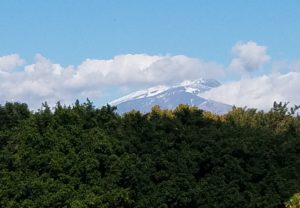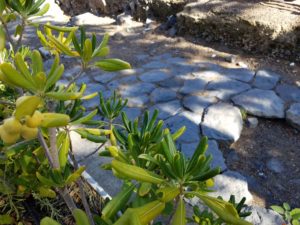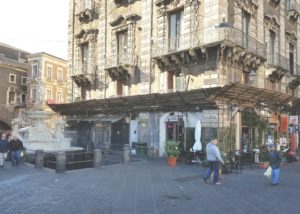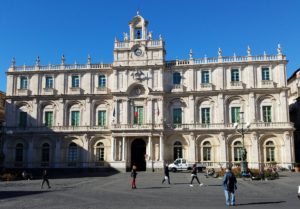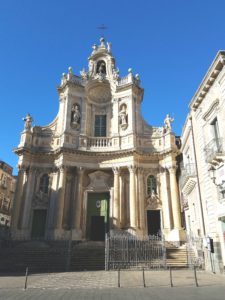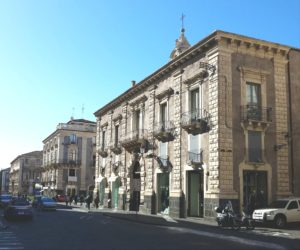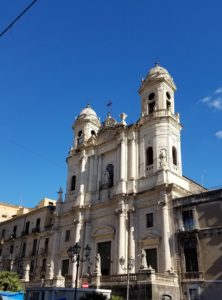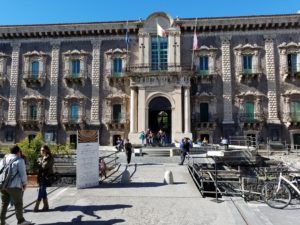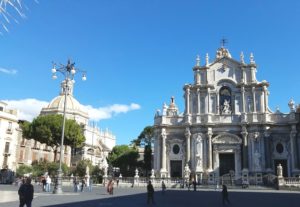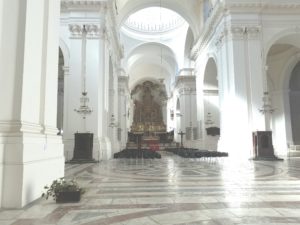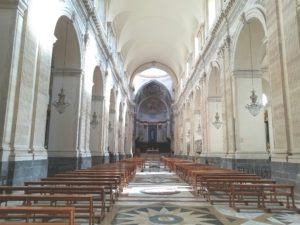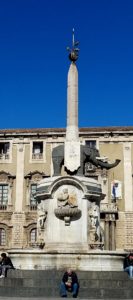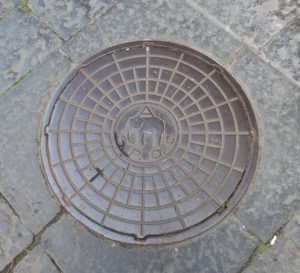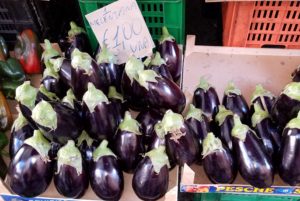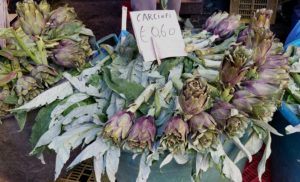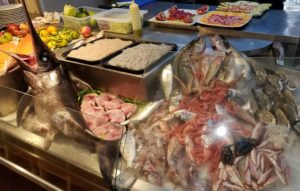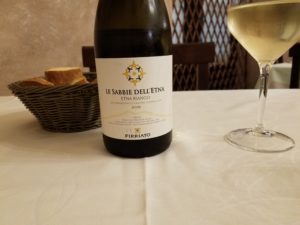Catania sits under brooding Mount Etna, the biggest volcano in Europe. The volcano has buried the city 17 times in recorded history.
The Greeks were here 2700 years ago, attracted by the fine harbor. Then the Romans, Ottomans, Normans, etc. But not much remains. There is a ruined Roman Greek theater, and the remains of other Roman works.
But the attraction of Catania comes from its destruction in 1693, when it was rebuilt in an opulent Baroque style. The entire downtown is a World Heritage Site. Here are some views of the buildings.
This grand 1700’s Cathedral was built on the ruins of an old Norman church.
It, and other Cathedrals here enclose huge spaces but are curiously stark and simple inside.
Having just arrived here from London, where the Norman “William the Conqueror” is still big news, I was puzzled as to the presence of the Normans way down here in the middle of the Mediterranean. And interested to learn that starting from around 1060 or so they began to take over areas of Sicily and within a few hundred years controlled all of the island and the lower third of the Italian peninsula. This was not a big land grab like William’s. Apparently different bands of mercenaries were fighting for pay in the area and decided that this was not only easy pickings, but a nice place and set themselves up with fiefdoms. Which eventually united.
The entire town seems to be constructed from blocks of lava.
The symbol of the city is this little Elephant. Sculpted in lava.
The elephant symbol even carries on down to the manhole covers.
Why an elephant is unclear. But curiously Sicily in prehistory had pigmy elephants, and it is believed that this is the source of the tale of the Cyclops. When the Greeks found pigmy elephant skulls, about twice the size of a human head, and mistook the hole for the trunk for a central eye.
The city is very gritty. Literally since the lava stone erodes easily, shedding plaster and paint coatings. And figuratively. The city is poor and some areas not so clean.
The markets cover city blocks, with shoes, clothing, household goods, and fresh vegetables and fruits.
And seafood by the acre. (seriously).
There are seafood restaurants all over the city, and of course it is the confluence of a World Heritage Site and great food that always attracts your humble correspondent.
Ok Ok. And good local wine. Here, the sands of Etna.
